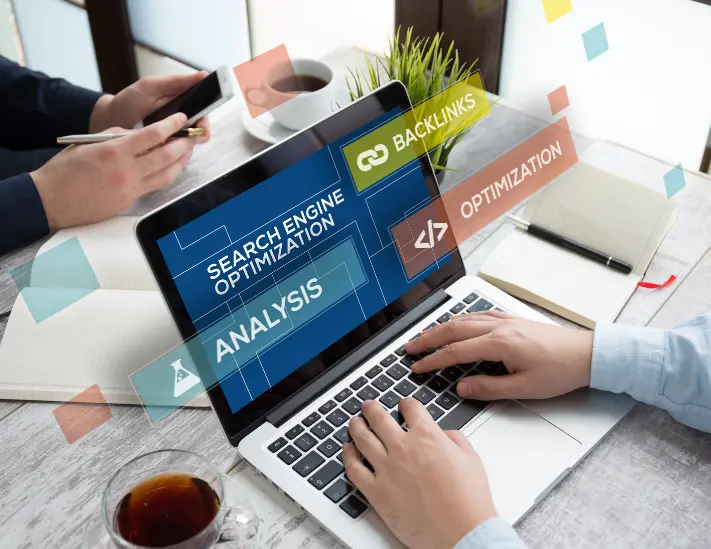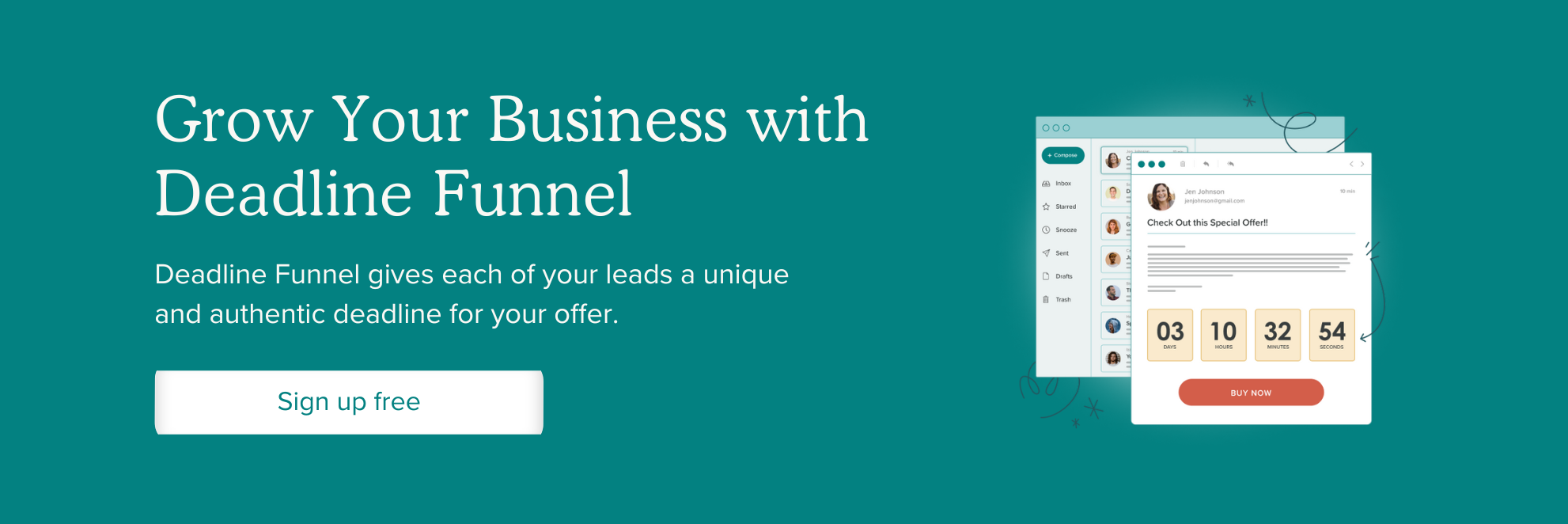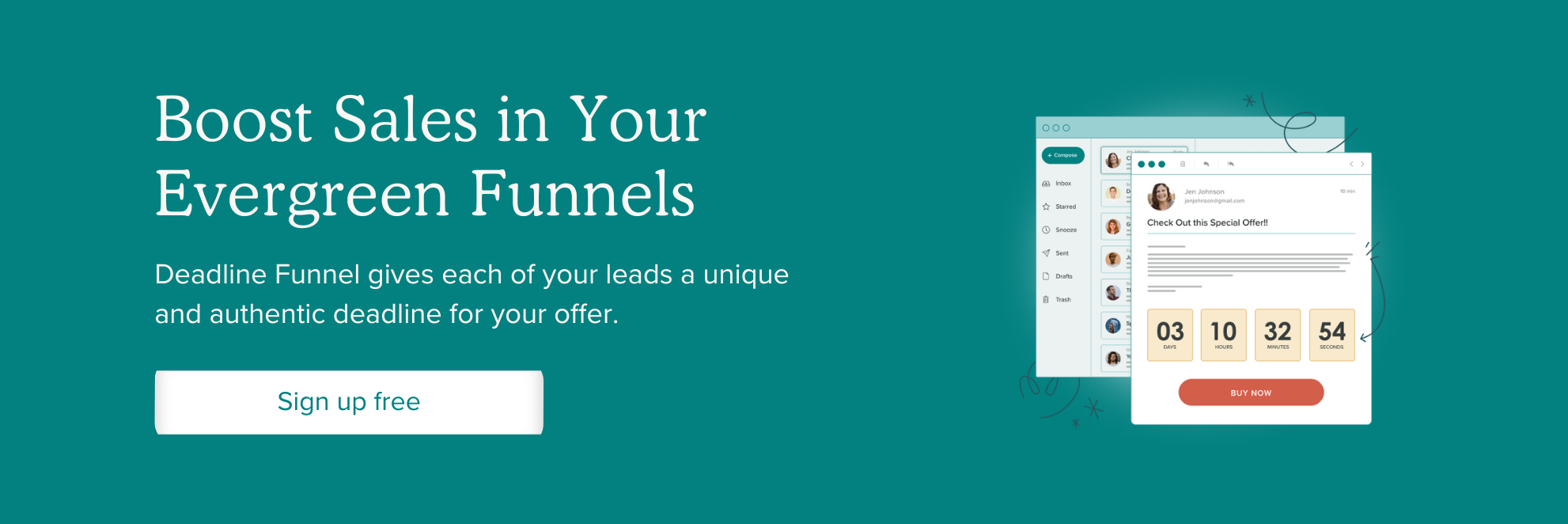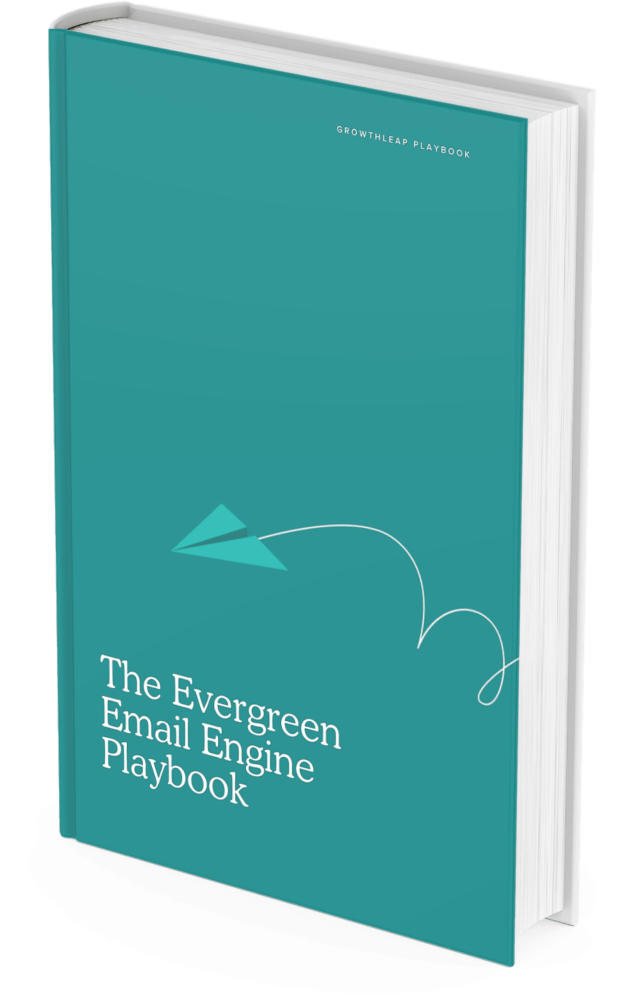
This is Part 5 in a free seven-part training series. Part 6 (Trivia Time: Do you remember these?) is here.
More from this series
The Ultimate Offer Blueprint — 7 Steps to Creating High-Converting Offers
- Lesson 1: The worst compliment in sales
- Lesson 2: If you’re not very _____ you don’t get much money
- Lesson 3: How to stop being invisible
- Lesson 4: Sales so good, they close themselves
- You are reading Lesson 5: Unclogging your sales funnel
- Lesson 6: Trivia Time: Do you remember these?
- Lesson 7: The 1 thing more important than price
- BONUS: The most important thing you can know about offers
“Could you do me a favor?” he said?
“Sure. What’s up?”
“I paid a consultant a good chunk of money to create a viral contest we’re kicking off. I’d love to get your feedback.”
I said, “Send me a link. I’m happy to take a look.”
When I clicked through, here’s the first thing that caught my eye:

Problemo numero uno… he was NOT using Deadline Funnel.
But that’s not the REAL lesson.
The BIG problem was the number of days remaining.
I said “Before I dig any deeper into your funnel, you gotta fix the deadline”
“Why what’s wrong?”
“Deadlines are kind of like a magnifying glass. When something is close, it works fantastic. But if you’re not close enough it actually makes things worse.”
I call this concept “Deadline Distance”.
(BTW… we have a feature built into Deadline Funnel to make this work for you.)
But the meta lesson I want to get across is sometimes you can do the RIGHT thing the WRONG way and screw up the results.
The right thing
Done the wrong way
Is the wrong thing.
Deadlines are a critical must have for you to have a truly spectacular offer.
But if you do it the wrong way… or at the wrong time… or if you’re missing other elements…
You’re going to wonder why your offer isn’t bringing you sales.
Which is why I’ve put together this 7-step playbook with my conversion rate optimization best practices: The Ultimate Offer Blueprint.

How do you optimize conversion rate?
The Ultimate Offer Blueprint gives you 7 actionable steps to optimize your conversion rate where it matters most: with your offer. Yes, you may see a boost in sales after testing things like the button color on your forms or the headline of your sales page. But you are much more likely to see a major lift in conversions by first focusing your CRO (conversion rate optimization) at the offer level. Here are the 7 elements of an optimized high-converting offer:
- Define (or redefine) Your Ideal Customer Profile
- Craft Your Value Proposition
- Develop Your Unique Mechanism
- Create Your Risk Reversal
- Determine The Deadline
- Build In Your Bonuses
- Set Payment Terms
Ultimate Offer Blueprint Step 5 — Determine The Deadline
Since we’re currently focused in on step #5 (Determine The Deadline), let’s dive into a few actionable steps you can take to improve your offer and get the most out of the deadlines in your sales funnels.
NOTE: for conversion rate optimization best practices across all 7 steps of The Ultimate Offer Blueprint, register for my free training while it’s still available.
How do you create a deadline funnel?
There are 3 simple decisions to make when picking an effective deadline for your funnel:
- Which type of deadline will you choose? Evergreen, Fixed Date or Quantity?
- What will the length of your deadline be?
- What happens to your offer after the deadline expires? Will your offer go away completely? Just the bonuses go away? Does the price change?
Creating your deadline funnel starts by answering those questions.
Then it’s simply a matter of building your funnel to match.
Looking for more conversion rate optimization tools & strategies?
Register for my FREE workshop where I’ll reveal more detail about the 3 deadline types plus the 3 most high-converting options for what to do when the deadline for your offer expires (most people get this part wrong).
Register today and make sure to block time out in your calendar to dive into this training before it comes offline.
It’s free.
But you have to register asap if you want to get the training and tools we’ve put together for creating your Ultimate Offer.
Sincerely,
Jack





